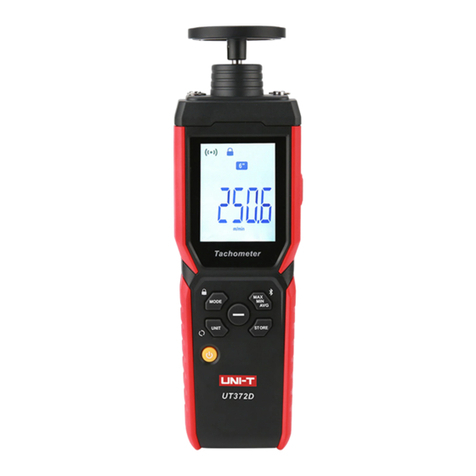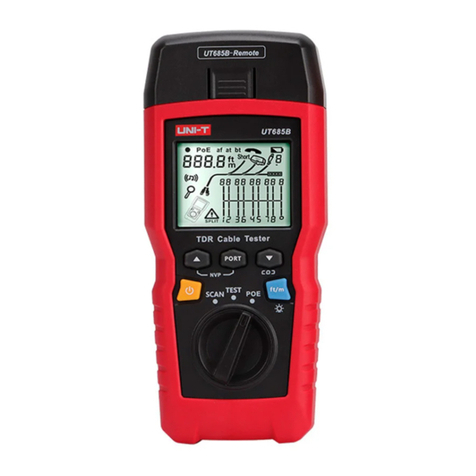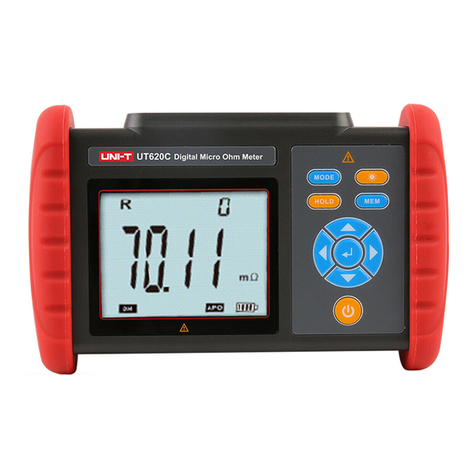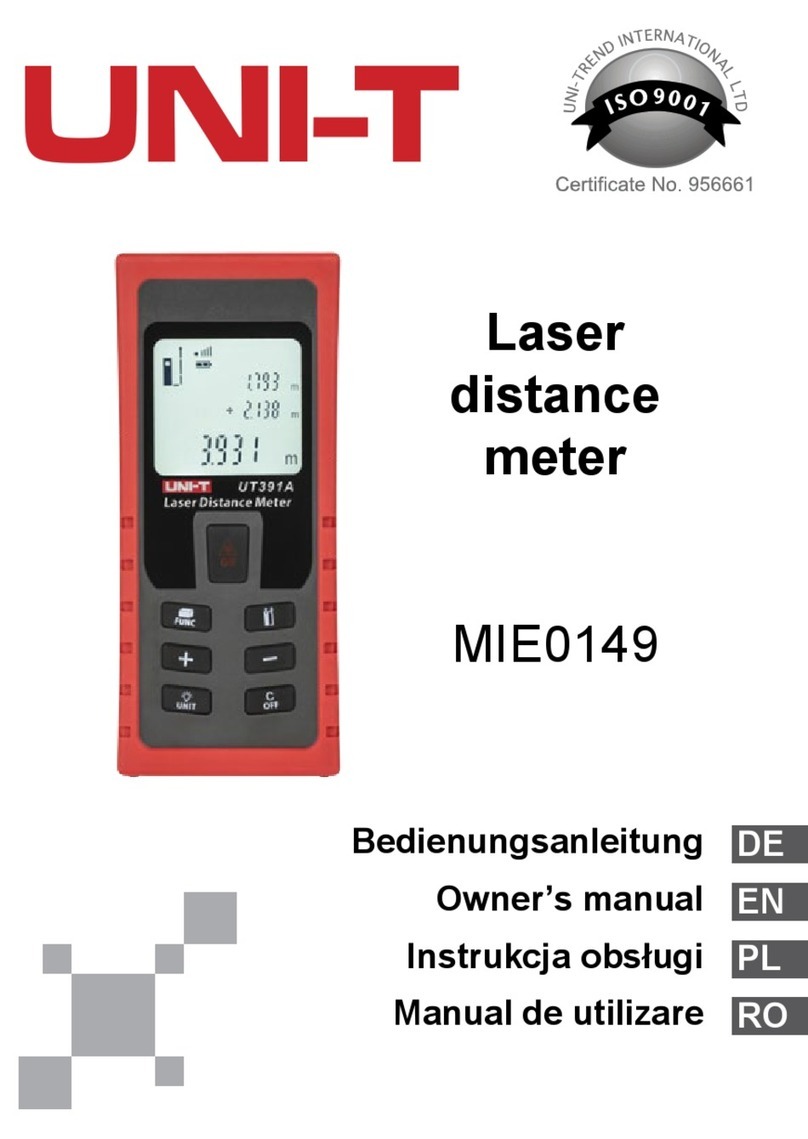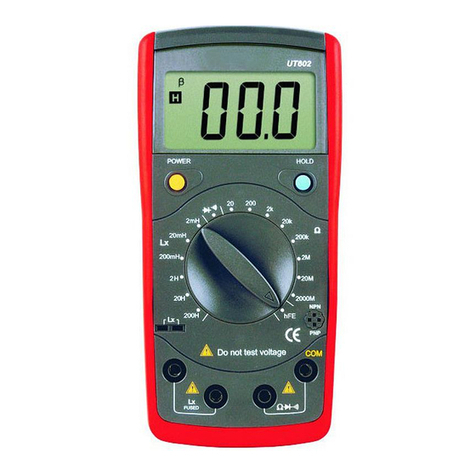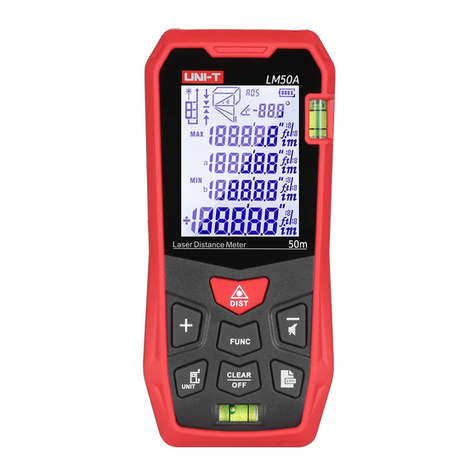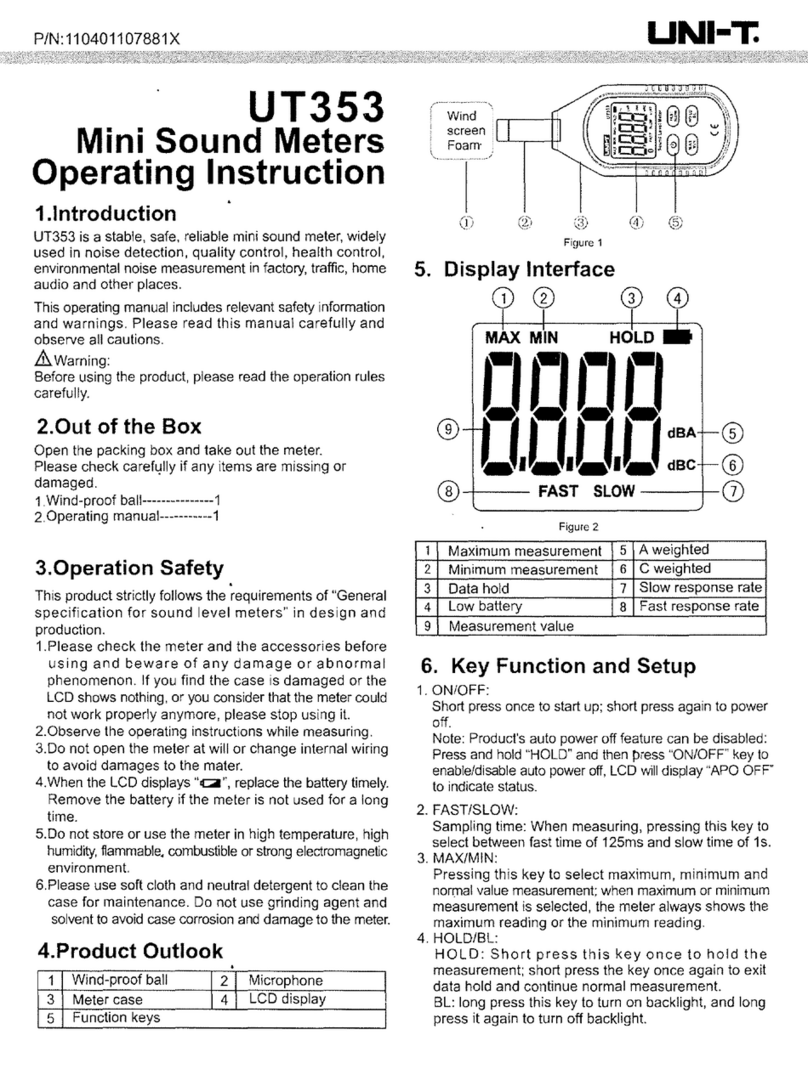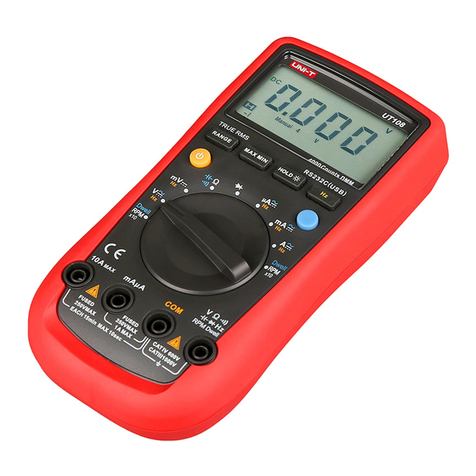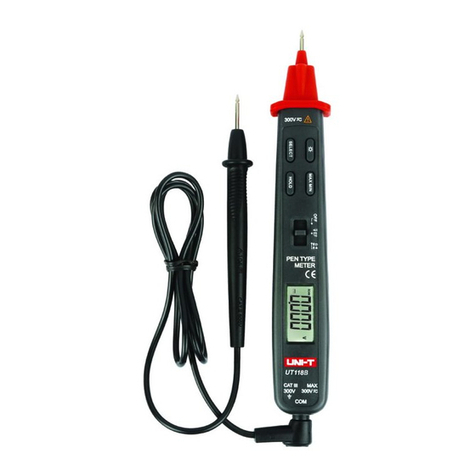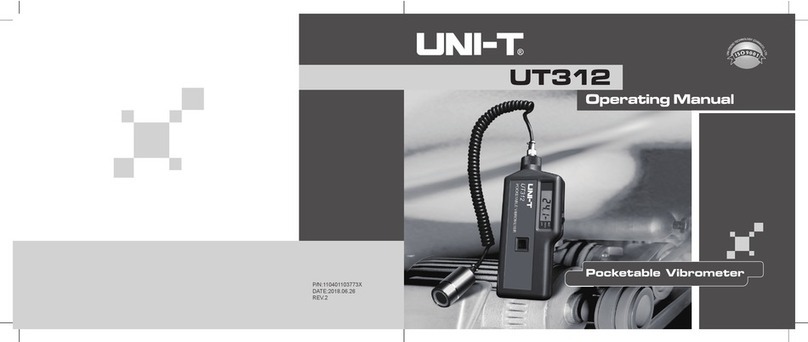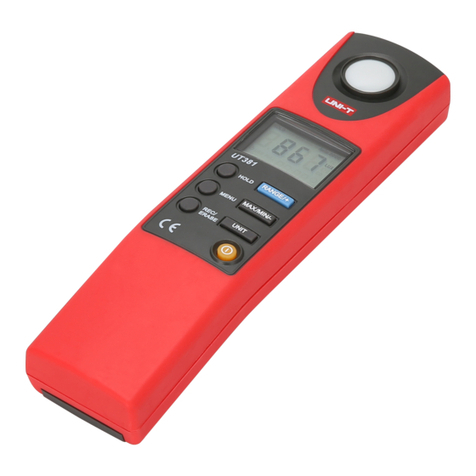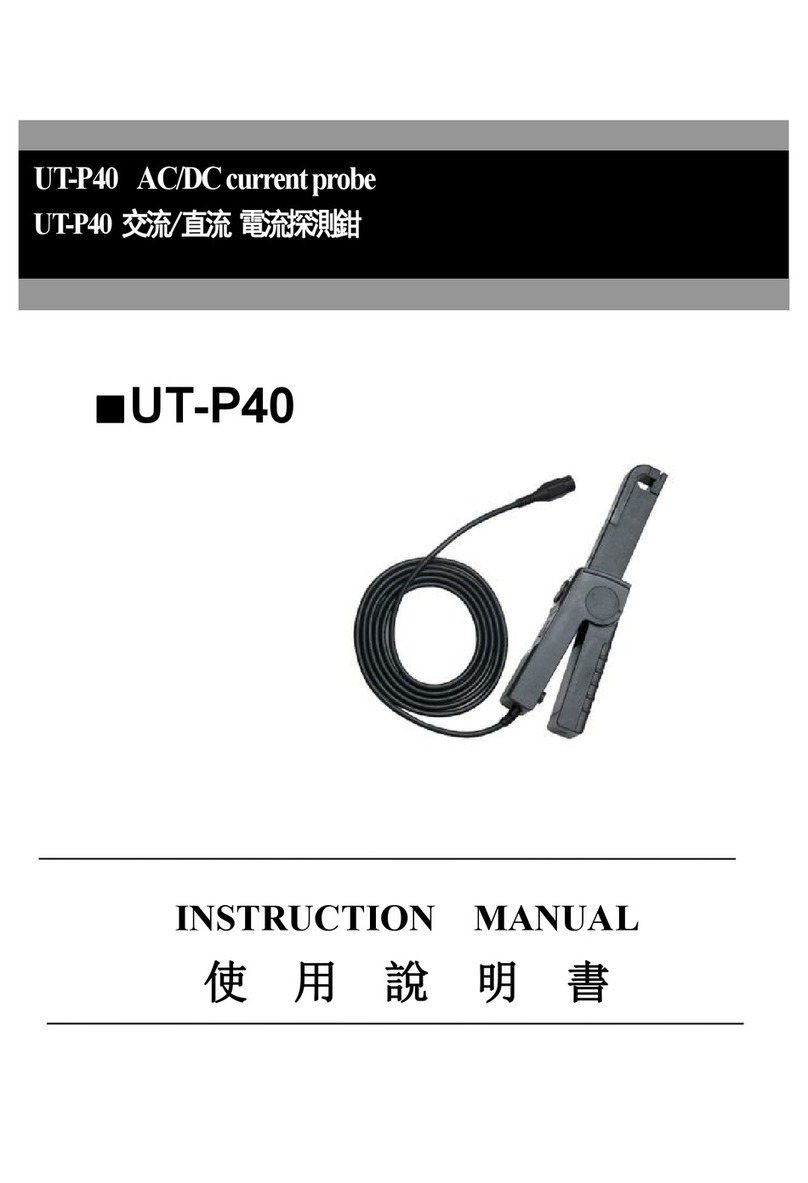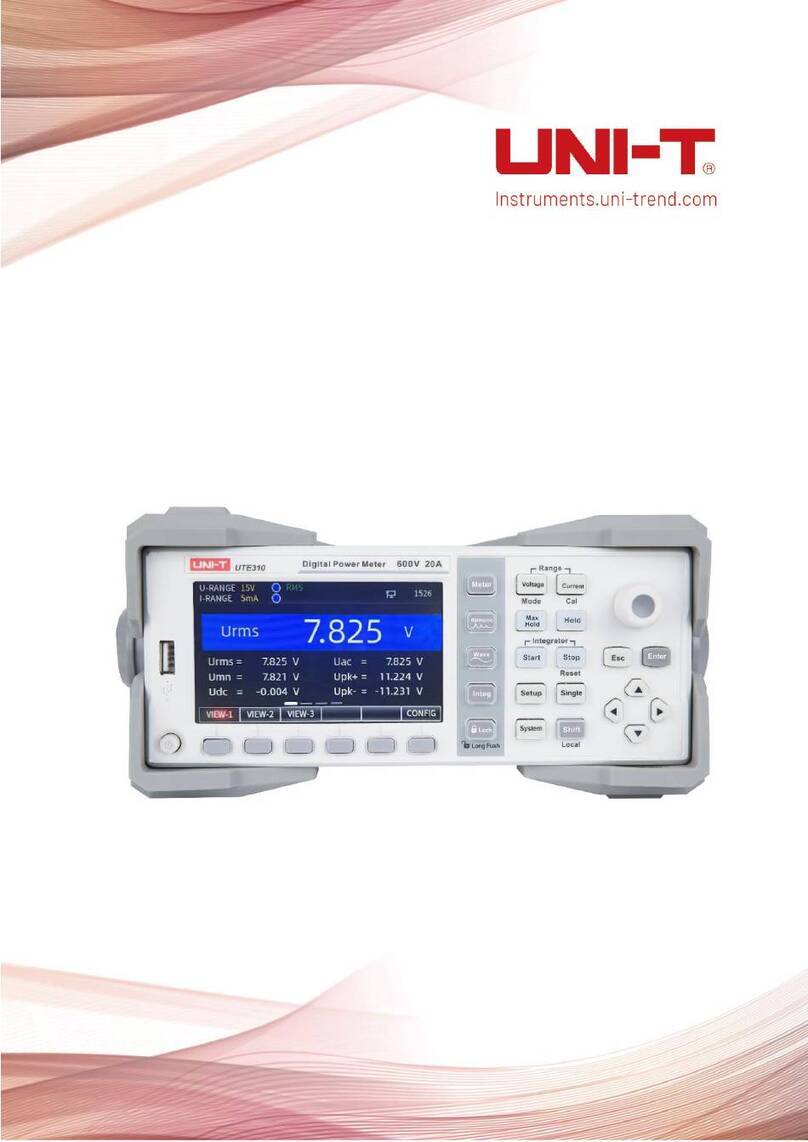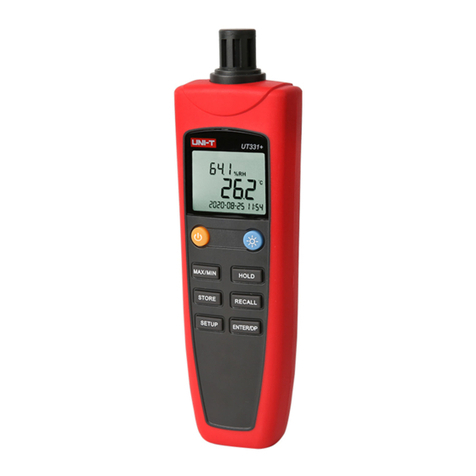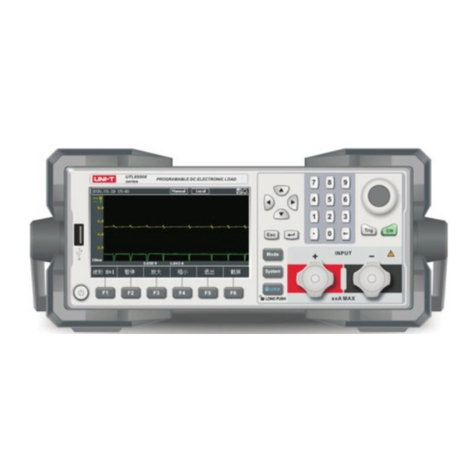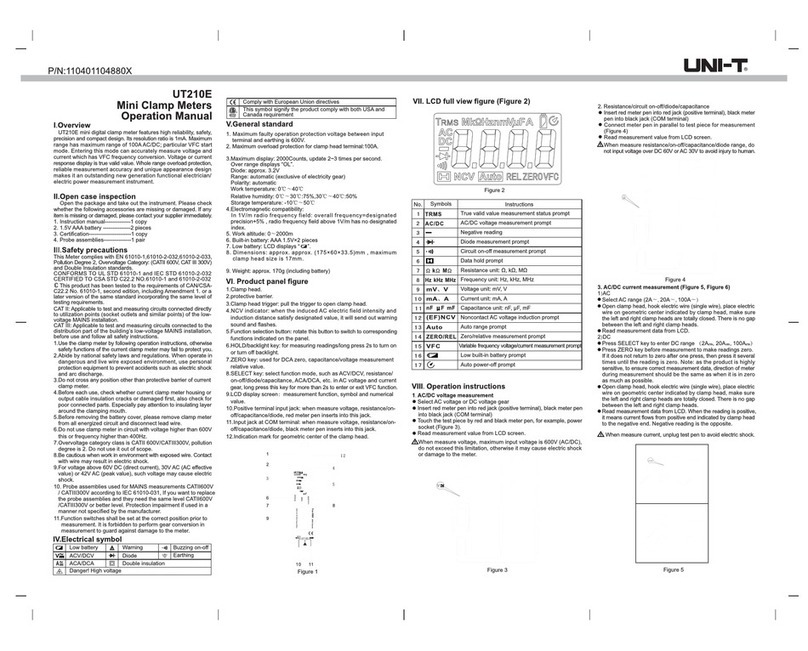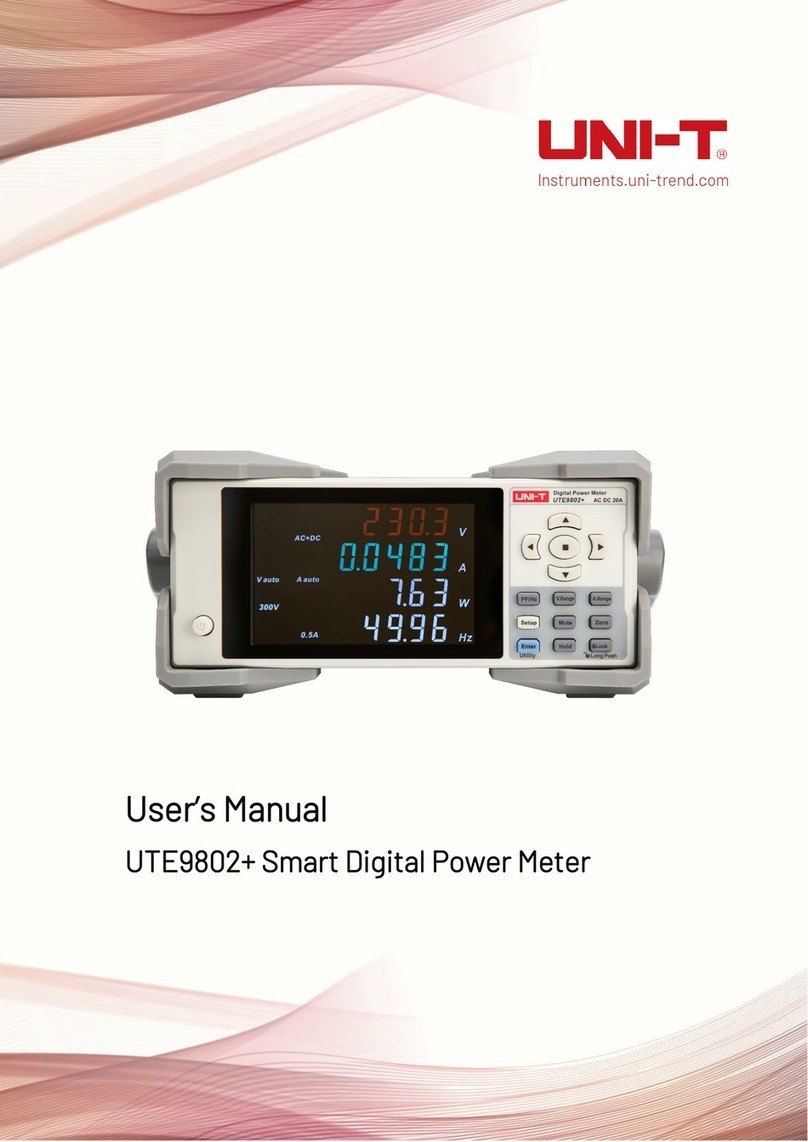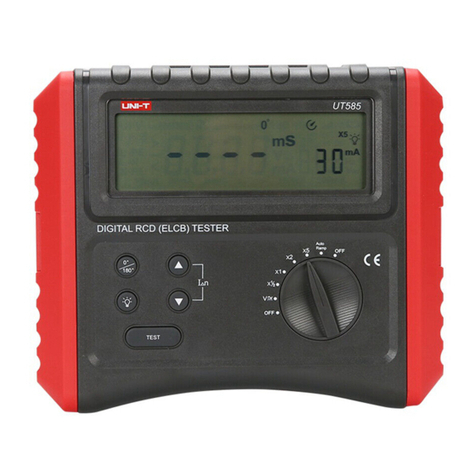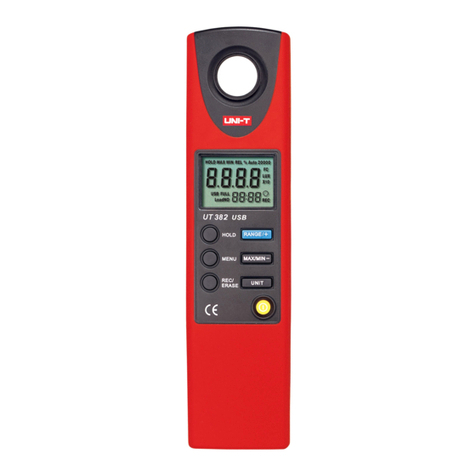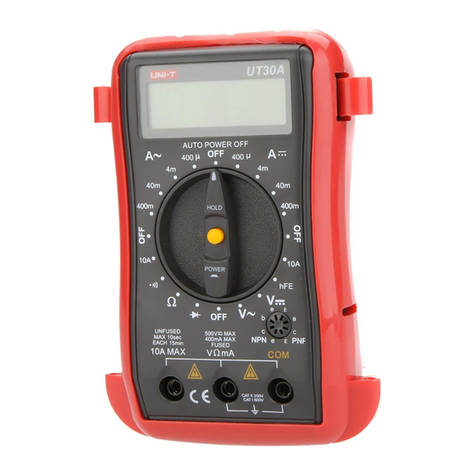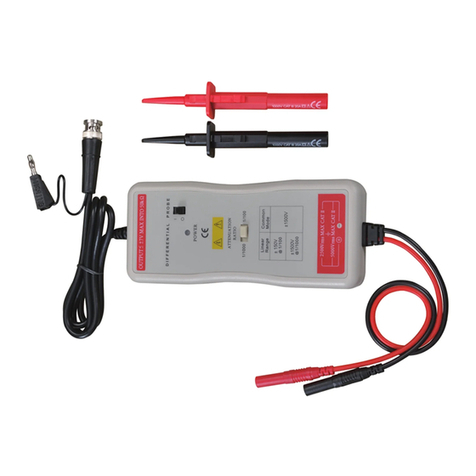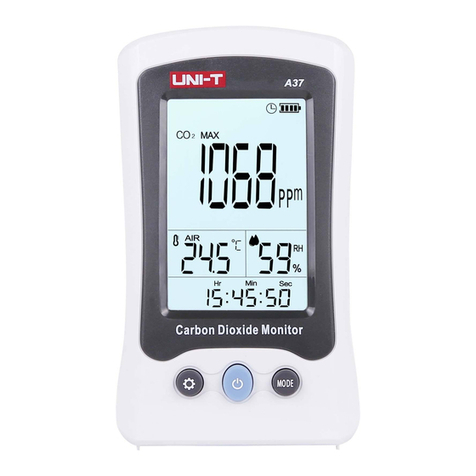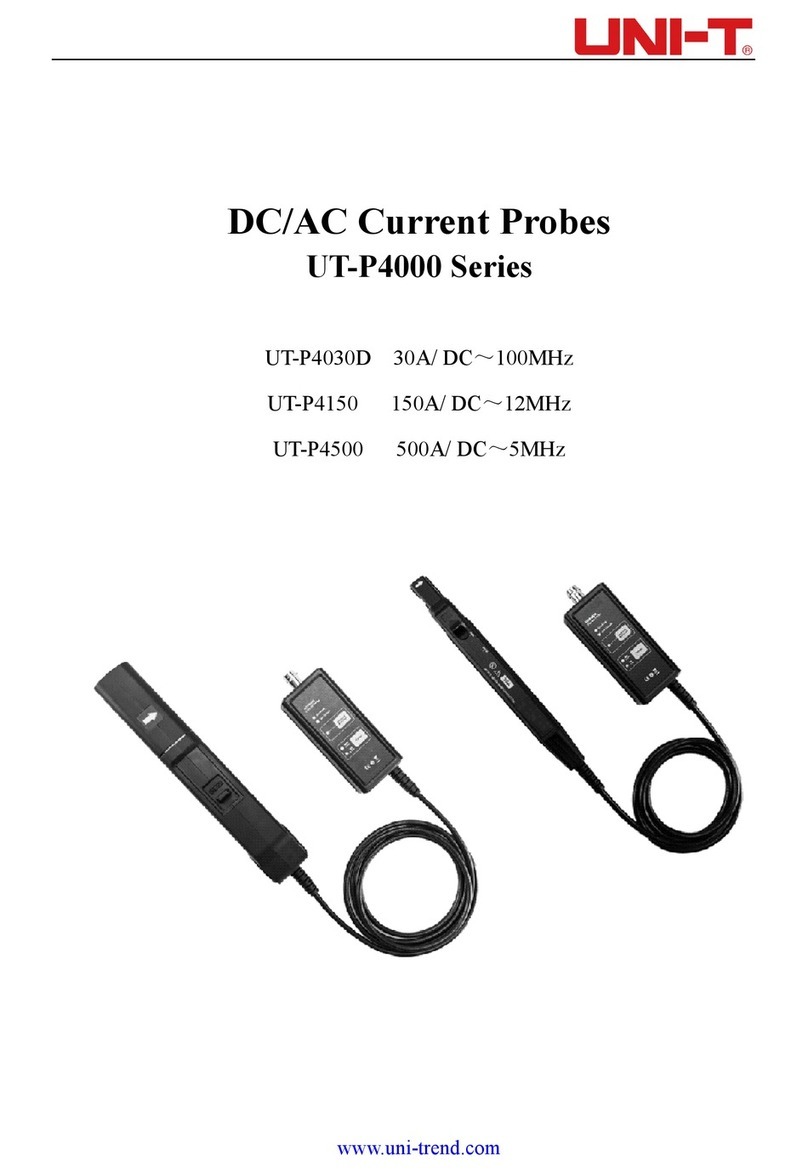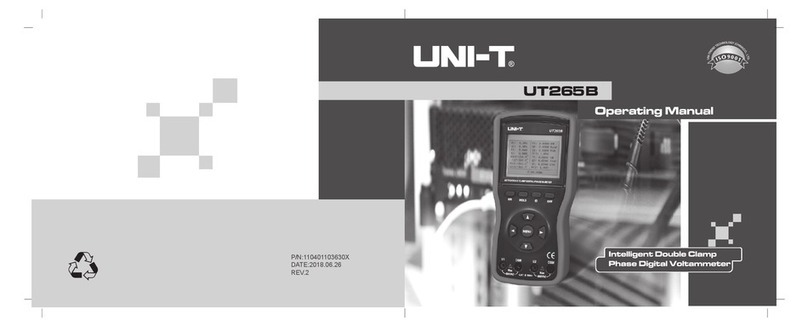
Service Manual UTS1000/3000 Series
Instruments.uni-trend.com 2/ 25
Preamble
Dear user:
Hello! Thank you for purchasing a brand-new Uni-Tech instrument. In order to use this instrument
correctly, please read the entire text of this user manual carefully before using this instrument, especially
the part about "Safety Precautions".
If you have read the entire text of this manual, it is recommended that you keep this manual in a safe
place, place it with the instrument, or put it in a place where you can refer to it at any time so that you can
refer to it in the future.
Copyright Information
UNI-T Uni-T Technology (China) Co., Ltd. All rights reserved.
UNI-T products are protected by patent rights in China or other countries, including patents that have
been obtained or are being applied for.
The company reserves the right to change product specifications and prices.
UNI-T reserves all rights. Licensed software products are owned by UNI-T and its subsidiaries or
providers, and are protected by national copyright laws and international treaties. Information in this
document supersedes that in all previously published sources.
UNI-T is a registered trademark of UNI-TREND TECHNOLOGY (CHINA) CO., LTD].
If the original purchaser sells or transfers the product to a third party within one year from the date of
purchase, the warranty period shall be from the date the original purchaser purchases the product from UNI-
T or an authorized UNI-T distributor Accessories and fuses etc. are not covered by this guarantee within one
year from the date of the warranty.
If the product proves to be defective within the applicable warranty period, UNI-T may, at its sole
discretion, either repair the defective product without charge for parts and labor, or replace the defective
product with an equivalent product (at UNI-T’s discretion), UNI - The components, modules and replacement
products used by T for warranty purposes may be brand new, or have been repaired to have the performance
equivalent to new products, and all replaced components, modules and products will become the property
of UNI-T.
References below to "Customer" mean the person or entity claiming the rights under this Warranty. In
order to obtain the service promised by this guarantee, the "customer" must notify UNI-T of the defect within
the applicable warranty period, and make appropriate arrangements for the performance of the service, and
the customer shall be responsible for packing and shipping the defective product to UNI-T's designated
repair center, prepay the freight and provide a copy of the original purchaser’s proof of purchase if the
product is to be shipped to a location within the country where the UNI-T repair center is located, UNI-T shall
pay for the return of the product to the customer, if the product is delivered Returns to any other location are
the customer's responsibility to pay all shipping charges, duties, taxes and any other charges.
This warranty does not apply to any defect, failure, or damage caused by accident, normal wear and tear
of machine parts, use outside or improper use of the product, or improper or insufficient maintenance. UNI-
T has no obligation to provide the following services according to the provisions of this guarantee:
a) Repair damage caused by installation, repair, or maintenance of the product by non-UNI-T service
representatives;
b) Repair of damage caused by misuse or connection with incompatible equipment;
c) Repair any damage or malfunction caused by using power supply not provided by UNI-T;
d) Repair of products that have been altered or integrated with other products if such alterations or
integration would increase the time or difficulty of product repairs.
This warranty is made by UNI-T for this product and is used to replace any other express or implied
warranties. UNI-T and its distributors refuse to make any implied warranties of merchantability or fitness for
a particular purpose. In the event of a breach of this warranty, UNI-T is responsible for repairing or replacing
defective products as the sole and exclusive remedy provided to the customer, regardless of whether UNI-T
and its distributors have been informed in advance of any indirect, special, incidental or consequential
damage, UNI-T and its dealers are not responsible for such damage.












